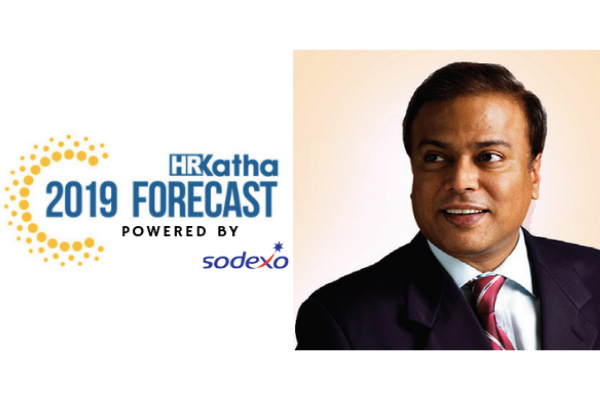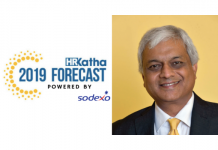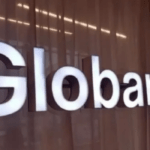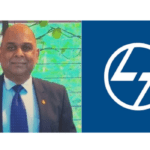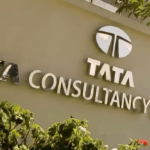More power to HR in 2019
Yes, Indeed. The shift is rapidly towards creating business impact through people.The entire life cycle management of people is best left to HR operational experts. Business–HR partnership assumes significance in the areas of culture building, capability readiness, succession acceleration and moving from performance to contribution. With digital enabling this quicker than ever before, HR is expected to wear a predictive hat and take instant decisions on its feet in every single area. The task is to partner the business in organisation/team design, work flow enablement, realtime learning, customer engagement, retention measures and social engagement. Workforce is of all kinds now, so building stakeholder culture for organisational success coupled with brand building is of different order. Times are exciting and the tasks are varied but it calls for a multi-faceted HR leadership to be able to do this.
Personalised people policy – one size doesn’t fit all
There is constant pressure for personalisation of policies. While 80 per cent of the policies hold good, at a generic level, around 20 per cent need a flexible approach. Normally, the organisation will accommodate flexibility of policies based on merit. There is an increasing trend to be more flexible towards ‘value creation’. If we were to apply the 20:80 principle, and spirit the organisations into value creators:others, this flexibility warrants attention on the 20 per cent differentiators to increase the outcome directly linked to the better flexibility they are provided. There is no ‘one’ answer here, but taking a position of customisation towards ‘value creators’ is much more sustaining than doing so-called on an ad-hoc basis across the board. This is surely trending for now and is likely to take final shape in 2019.
Download the HRKatha 2019 Forecast – powered by Sodexo to read what the top 30 HR leaders predict for the new year
The real HR will stand up and get closer to people
At the onset of industrial revolution 4.0, it’s imperative to look at what the new age workforce needs to excel in. It’s high time, the focus shifted from productivity to performance. Adaption of technology, innovation and disruptions is required for a better future. To do so, I see the following happening:
A. Shift in mindset
The future of work looks very different from the past. However, people with grit, creativity and entrepreneurial spirit will embrace this future, rather than cling to the status quo. People should realise that they can be better at their jobs with the technology of today, and the technology that is yet to come , instead of fearing that their human skills will be devalued. Hence, a shift in the mindset needs to take place. HR, with the support of technology, needs to empower people to perform and identify gaps to be filled through development programmes rather than evaluating performance alone.
B. Dependence on HR analytics
Data derived from HR analytics should drive the decisions at the workplace. HR will take charge of attrition and recruitment with HR analytics and come up with insights for improvements.
C. Accuracy of vision to create business impact
Define mission and strategy around business impact, with focus on developing a more capable, agile workforce for the future. An accurate vision leads to classification and prioritisation of tasks for optimum efficiency.
D. Better communication
Communication has a significant effect on the success of any strategy in the organisation. Effective communication will result in employee engagement, boosted workplace productivity and hence, business growth. The conduit from strategy to execution needs to be built strongly on communication to make it fully effective. The organisational communication should be accessible and understandable by employees at all levels and hierarchies. The idea behind communication for the workforce should not only be limited to informing, but should also extend to alignment with organisational success, as partners.
“Diversity not only includes how individuals identify themselves but also how others perceive them. Through strong policies and practices supporting diversity, continuous communications and diverse work groups can go a long way in creating a highly functional and diverse group.”
Technology will allow HR to be more human
With advancement of technologies, through complex algorithms, we are getting better inferences out of data, which in turn enables us to make better judgments of a situation and take actions accordingly.
Technology has had positive effect on internal operations for organizations, but it also changed the way human resource management work. Human Resource Information System (HRIS) allow HRM professional to better facilitate human resource plans, make decisions faster, clearly define jobs, evaluate performance, and provide cost effective benefits that employees want. Likewise, it helps to strengthen communication with both the external community and employees. Technology also dramatically changed how human resource managers orient, train, and develop employees and help them manage their careers.
Teleconfencing technology allows employees to train and collaborate in groups regardless of their location. Technology has a visible positive impact on the internal operations of the organisation but it has also changed the way the HR department works. Technology facilitates better human resource planning, decision making, job evaluation, performance management and communication.
Although the aforementioned developments have increased the HR department’s dependency on technology but, the human touch is always there to understand the situation better and take action accordingly. Technology is there to enable HR to be more employee centric. The role and processes may change, but through the data that is being derived from the man– machine synergy, HR will be close to the employees than ever before. The future will be a blended model of Hi-Tech and Hi-Touch HR.
Managing a diverse workforce
Globalisation has made organisations more diverse than ever. Encouraging diversity is the way forward for companies. In a global talent market, the businesses that can successfully manage diversity in the workplace, will definitely have a competitive advantage over others in terms of differentiation, innovation and employer branding. Workplace diversity refers to the variety of differences encompassing race, gender, ethnic groups, age, religion, sexual orientation, citizenship status, military service and mental and physical conditions, as well as other distinct differences between individuals in an organisation.
Diversity not only includes how individuals identify themselves but also how others perceive them. Through strong policies and practices supporting diversity, continuous communications and diverse work groups can go a long way in creating a highly functional and diverse group. Co-existence of a multigenerational workforce along with machines will be the new order of the day.
HRKatha 2019 Forecast is powered by Sodexo
Value our content... contribute towards our growth. Even a small contribution a month would be of great help for us.
Since eight years, we have been serving the industry through daily news and stories. Our content is free for all and we plan to keep it that way.
Support HRKatha. Pay Here (All it takes is a minute)





